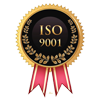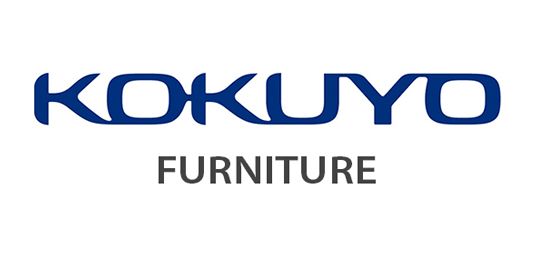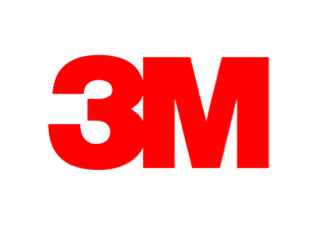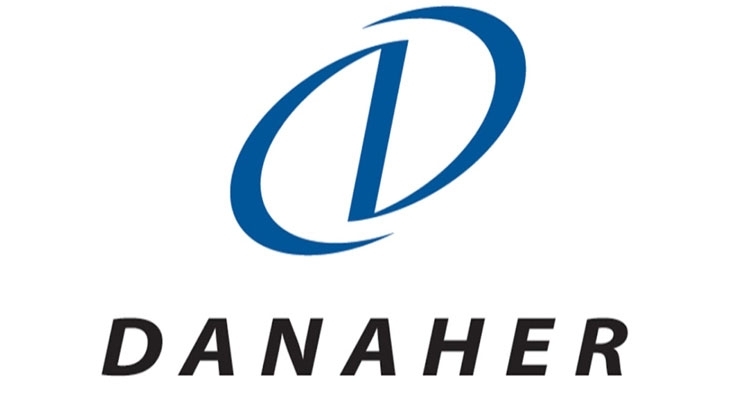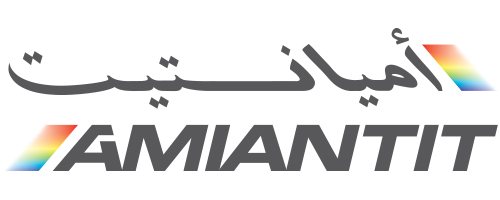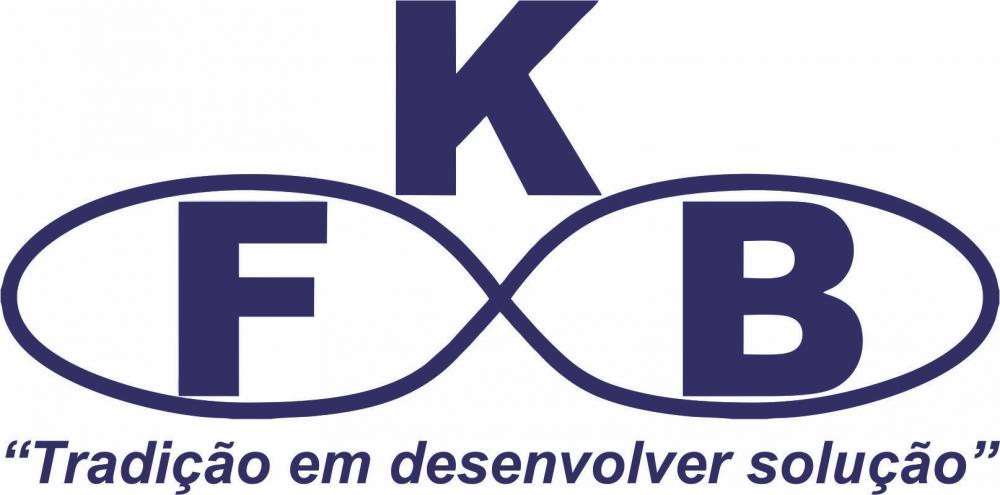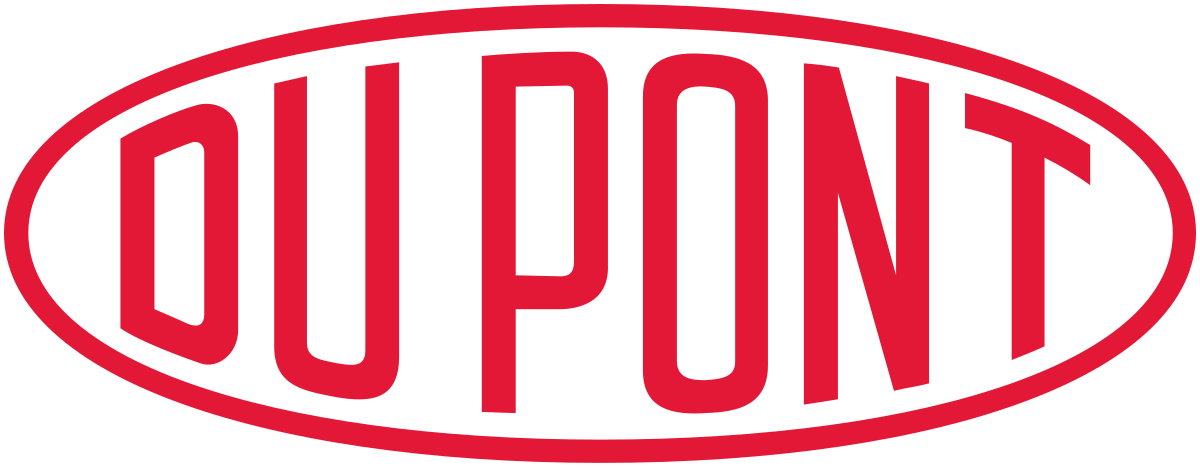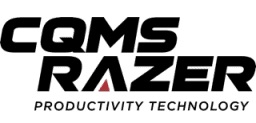HVDC Converter Station Market: Global Size, Share, Trends, Growth and Forecast, 2022-2032
HVDC Converter Station Market Overview and Definition
HVDC converter station market revenue will reach approximately USD 6.1 billion in 2022. Further, our HVDC converter station market insights show that the market is expected to grow at a CAGR of approximately 3.8% during the forecast period and reach a value of approximately USD 8.9 billion by 2032.
A high-voltage direct current (HVDC) converter station is a key component in a HVDC transmission system, which is used to transmit large amounts of electrical power over long distances. The converter station is used to convert alternating current (AC) power into direct current (DC) power, and vice versa, for efficient transmission and distribution.
The converter station consists of various components, including converters, transformers, filters, and switchgear, which are used to control the flow of electricity and maintain the stability of the system. The converter station also includes control systems and communication equipment for monitoring and controlling the system.
The global HVDC converter station market is driven by the increasing demand for energy and the growing need for efficient and reliable power transmission and distribution. HVDC transmission systems are preferred for long-distance transmission of electrical power as they are more efficient and have lower losses than traditional AC transmission systems.
In addition, the increasing use of renewable energy sources, such as wind and solar, has led to the need for new and efficient transmission systems, as these sources are often located far from population centers and require long-distance transmission.
The market is also influenced by the development of new technologies and the increasing adoption of digitalization and automation in the power sector. The use of advanced sensors, control systems, and communication equipment is improving the efficiency and reliability of HVDC converter stations, and is expected to drive the growth of the market in the coming years.
However, the high cost of HVDC converter stations and the complexity of implementation may limit the growth of the market in some regions. In addition, concerns about environmental impacts and the need for regulatory approval may also impact the demand for HVDC transmission systems and converter stations.
Overall, the global HVDC converter station market is expected to continue to grow in the coming years, driven by the increasing demand for efficient and reliable power transmission and distribution, and the development of new technologies and digital solutions in the power sector.
Electricity is mainly produced at large power plants and is then transferred at high voltages as high as 110kV or more to the substations that are situated at a long distance by the transmission lines. The high voltage current is later stepped down to the distribution network level around 11 kV or 415 V to distribute it to the consumers. The majority of the power plants generate electricity in AC form and later using the transformer's voltage can be stepped down easily.
For the transmission of power for shorter distances that are usually less than 100 km, AC transmissions are preferred. Sometimes, the use of HVAC transmission system is not possible for transmission of power over long transmission lines that are as long as 500 km and more. HVAC systems are not feasible in such instances due to higher transmission losses and voltage instability. HVAC systems' disadvantages are their current carrying capacity, reactive power loss, limitations on long distance transmission, Ferranti effect, and skin effect. To overcome these disadvantages, HVDC converters are used. HVDC transmission is mainly used to improve power transmission efficiency and to enhance the interconnection of asynchronous grids.
In the HVDC converter station, its converter transformer steps-up the generated AC voltage to the required level. The converter station receives electric power from a three-phase AC network and then rectifies it to DC, which is later transmitted through overhead lines. An inverter converts the DC voltage back to AC at receiving end, which is further stepped down to distribution voltage level at the consumer end. This technology is feasible and suitable for transmitting high power range between100-10,000MW. HVDC reduces overall costs and it also minimizes the losses. Moreover, other advantages of HVDC converter systems include controllability, and stability. HVDC system becomes are cost effective for larger distances.
According to the international atomic energy agency, at the end of 2021, around 443 nuclear power reactors were operational on the global scale, having their total installed power capacity of around 392 GW. In addition to the operational rectors, 54 reactors were under construction with a total capacity of 57 GW. They also observed that in comparison with 2020, overall electricity production from all the energy sources increased by 1.3% in 2021 and for nuclear power reactors, it increased about 4%, reaching 2657 TW. One of the major observation that needs to be underlined here is nuclear power generation accounted for almost 10.5% of overall electricity production in 2021.
The electricity demand is increasing globally continuously with increasing population. Growing demand for sustainable energy, demand for minimizing the GHG emissions & air pollution, and cost-effective carbon-free power supply is expected to increase HVDC converter stations' popularity. Moreover, the increase in the number of shore wind and government initiatives in the form of funds for renewable power sources drives the growth of the HVDC converter station market. Although the HVDC system minimizes the overall cost of the transmission, high initial cost, prolonged approval process for transmission projects, and transmission congestion, some factors might hinder market growth in coming years.
The market share of the HVDC converter station market is highest for Europe followed by the Asia-Pacific region. In Asia-Pacific, the market is primarily driven by India and China. India and China are the major economies in Asia-pacific that have a huge demand for power transmission systems. Owing to the world's highest populated region, Asia-Pacific has the highest number of installed HVDC converter stations due to the requirement of bulk power transport. In addition to the most number of installed converter stations, China also has a strong presence of local players such as C-EPRI and NR Electric and helping the country meet its requirement of UHVDC projects. Moreover, China is also planning to connect various power grids to a central line in coming years, this development is expected to drive the market for HVDC converter stations during the forecast time period. According to Indian government’s body NCBI’s report in 2019, HVDC transmission can offer lucrative advantages in the grid electricity business. The studies have underlined that national HVDC overlay will be cost-effective towards de-carbonization, enhance resilience & reliability in the grid, and offer interregional stability. All these factors will provide lucrative opportunities in the growth of the HVDC converter station market.
The HVDC converter stations market is segmented on the basis of type, technology, and application, and region. On the basis of type, the market is sub segmented into
monopolar, BI-polar, back-to-back, and multi-terminal. On the basis of technology, the market is bifurcated into voltage source converters (VSC), line commutated converters (LSC). On the application basis, the market is divided into remote loads and powering islands, connecting wind forms, underground power links, bulk power transmissions, interconnecting networks, long-distance transmission via cables, grid access for offshore applications, and oil gas platforms.
Leading players in the HVDC converter station market include Mitsubishi Electric Corporation, Nissin Electric Co Ltd, ABB Ltd., General Electric Company, Siemens AG, Crompton Greaves Ltd., Toshiba Corporation, C-EPRI Electric Power Engineering Co. Ltd, NE Electric, Alstom, and Hitachi Ltd.
Research Methodology
Market Definition and List of Abbreviations
1. Executive Summary
2. Growth Drivers & Issues in Global HVDC Converter Station Market
3. Global HVDC Converter Station Market Trends
4. Opportunities in Global HVDC Converter Station Market
5. Recent Industry Activities, 2019
6. Porter's Five Forces Analysis
7. Market Value Chain and Supply Chain Analysis
8. Products Average Price Analysis, By Country
9. Global HVDC Converter Station Market Value (USD Million) & Volume (MT) Forecast, 2019-2025
10. Global HVDC Converter Station Market Segmentation Analysis, By Configuration
10.1. Introduction
10.2. Market Attractiveness, By Configuration
10.3. BPS Analysis, By Configuration
10.4. Monopolar Market Value (USD Million) Forecast, 2019-2025
10.5. Multiterminal Market Value (USD Million) Forecast, 2019-2025
10.6. Back to Back Station Market Value (USD Million) Forecast, 2019-2025
10.7. Bipolar Market Value (USD Million) Forecast, 2019-2025
11. Global HVDC Converter Station Market Segmentation Analysis, By Technology
11.1. Introduction
11.2. Market Attractiveness, By Technology
11.3. BPS Analysis, By Technology
11.4. LCC-HVDC Market Value (USD Million) Forecast, 2019-2025
11.5. VSC-HVDC Market Value (USD Million) Forecast, 2019-2025
12. Global HVDC Converter Station Market Segmentation Analysis, By Component
12.1. Introduction
12.2. Market Attractiveness, By Component
12.3. BPS Analysis, By Component
12.4. Valve Market Value (USD Million) Forecast, 2019-2025
12.5. Converter Transformers Market Value (USD Million) Forecast, 2019-2025
12.6. Harmonic Filters Market Value (USD Million) Forecast, 2019-2025
12.7. Reactors Market Value (USD Million) Forecast, 2019-2025
12.8. Circuit Breakers Market Value (USD Million) Forecast, 2019-2025
12.9. Others Market Value (USD Million) Forecast, 2019-2025
13. Geographical Analysis
13.1. Introduction
13.2. North America Market Value (USD Million) & Volume (MT) Forecast, 2019-2025
13.2.1. By Configuration
13.2.1.1. Introduction
13.2.1.2. Market Attractiveness, By Configuration
13.2.1.3. BPS Analysis, By Configuration
13.2.1.4. Monopolar Market Value (USD Million) Forecast, 2019-2025
13.2.1.5. Multiterminal Market Value (USD Million) Forecast, 2019-2025
13.2.1.6. Back to Back Station Market Value (USD Million) Forecast, 2019-2025
13.2.1.7. Bipolar Market Value (USD Million) Forecast, 2019-2025
13.2.2. By Technology
13.2.2.1. Introduction
13.2.2.2. Market Attractiveness, By Technology
13.2.2.3. BPS Analysis, By Technology
13.2.2.4. LCC-HVDC Market Value (USD Million) Forecast, 2019-2025
13.2.2.5. VSC-HVDC Market Value (USD Million) Forecast, 2019-2025
13.2.3. By Component
13.2.3.1. Introduction
13.2.3.2. Market Attractiveness, By Component
13.2.3.3. BPS Analysis, By Component
13.2.3.4. Valve Market Value (USD Million) Forecast, 2019-2025
13.2.3.5. Converter Transformers Market Value (USD Million) Forecast, 2019-2025
13.2.3.6. Harmonic Filters Market Value (USD Million) Forecast, 2019-2025
13.2.3.7. Reactors Market Value (USD Million) Forecast, 2019-2025
13.2.3.8. Circuit Breakers Market Value (USD Million) Forecast, 2019-2025
13.2.3.9. Others Market Value (USD Million) Forecast, 2019-2025
13.2.4. By Country
13.2.4.1. Market Attractiveness, By Country
13.2.4.2. BPS Analysis, By Country
13.2.4.3. U.S. Market Value (USD Million) & Volume (MT) Forecast, 2019-2025
13.2.4.4. Canada Market Value (USD Million) & Volume (MT) Forecast, 2019-2025
13.3. Europe Market Value (USD Million) & Volume (MT) Forecast, 2019-2025
13.3.1. By Configuration
13.3.1.1. Introduction
13.3.1.2. Market Attractiveness, By Configuration
13.3.1.3. BPS Analysis, By Configuration
13.3.1.4. Monopolar Market Value (USD Million) Forecast, 2019-2025
13.3.1.5. Multiterminal Market Value (USD Million) Forecast, 2019-2025
13.3.1.6. Back to Back Station Market Value (USD Million) Forecast, 2019-2025
13.3.1.7. Bipolar Market Value (USD Million) Forecast, 2019-2025
13.3.2. By Technology
13.3.2.1. Introduction
13.3.2.2. Market Attractiveness, By Technology
13.3.2.3. BPS Analysis, By Technology
13.3.2.4. LCC-HVDC Market Value (USD Million) Forecast, 2019-2025
13.3.2.5. VSC-HVDC Market Value (USD Million) Forecast, 2019-2025
13.3.3. By Component
13.3.3.1. Introduction
13.3.3.2. Market Attractiveness, By Component
13.3.3.3. BPS Analysis, By Component
13.3.3.4. Valve Market Value (USD Million) Forecast, 2019-2025
13.3.3.5. Converter Transformers Market Value (USD Million) Forecast, 2019-2025
13.3.3.6. Harmonic Filters Market Value (USD Million) Forecast, 2019-2025
13.3.3.7. Reactors Market Value (USD Million) Forecast, 2019-2025
13.3.3.8. Circuit Breakers Market Value (USD Million) Forecast, 2019-2025
13.3.3.9. Others Market Value (USD Million) Forecast, 2019-2025
13.3.4. By Country
13.3.4.1. Market Attractiveness, By Country
13.3.4.2. BPS Analysis, By Country
13.3.4.3. Germany Market Value (USD Million) & Volume (MT) Forecast, 2019-2025
13.3.4.4. United Kingdom Market Value (USD Million) & Volume (MT) Forecast, 2019-2025
13.3.4.5. France Market Value (USD Million) & Volume (MT) Forecast, 2019-2025
13.3.4.6. Italy Market Value (USD Million) & Volume (MT) Forecast, 2019-2025
13.3.4.7. Spain Market Value (USD Million) & Volume (MT) Forecast, 2019-2025
13.3.4.8. Russia Market Value (USD Million) & Volume (MT) Forecast, 2019-2025
13.3.4.9. Rest of Europe Market Value (USD Million) & Volume (MT) Forecast, 2019-2025
13.4. Asia Pacific Market Value (USD Million) & Volume (MT) Forecast, 2019-2025
13.4.1. By Configuration
13.4.1.1. Introduction
13.4.1.2. Market Attractiveness, By Configuration
13.4.1.3. BPS Analysis, By Configuration
13.4.1.4. Monopolar Market Value (USD Million) Forecast, 2019-2025
13.4.1.5. Multiterminal Market Value (USD Million) Forecast, 2019-2025
13.4.1.6. Back to Back Station Market Value (USD Million) Forecast, 2019-2025
13.4.1.7. Bipolar Market Value (USD Million) Forecast, 2019-2025
13.4.2. By Technology
13.4.2.1. Introduction
13.4.2.2. Market Attractiveness, By Technology
13.4.2.3. BPS Analysis, By Technology
13.4.2.4. LCC-HVDC Market Value (USD Million) Forecast, 2019-2025
13.4.2.5. VSC-HVDC Market Value (USD Million) Forecast, 2019-2025
13.4.3. By Component
13.4.3.1. Introduction
13.4.3.2. Market Attractiveness, By Component
13.4.3.3. BPS Analysis, By Component
13.4.3.4. Valve Market Value (USD Million) Forecast, 2019-2025
13.4.3.5. Converter Transformers Market Value (USD Million) Forecast, 2019-2025
13.4.3.6. Harmonic Filters Market Value (USD Million) Forecast, 2019-2025
13.4.3.7. Reactors Market Value (USD Million) Forecast, 2019-2025
13.4.3.8. Circuit Breakers Market Value (USD Million) Forecast, 2019-2025
13.4.3.9. Others Market Value (USD Million) Forecast, 2019-2025
13.4.4. By Country
13.4.4.1. Market Attractiveness, By Country
13.4.4.2. BPS Analysis, By Country
13.4.4.3. China Market Value (USD Million) & Volume (MT) Forecast, 2019-2025
13.4.4.4. India Market Value (USD Million) & Volume (MT) Forecast, 2019-2025
13.4.4.5. Japan Market Value (USD Million) & Volume (MT) Forecast, 2019-2025
13.4.4.6. South Korea Market Value (USD Million) & Volume (MT) Forecast, 2019-2025
13.4.4.7. Indonesia Market Value (USD Million) & Volume (MT) Forecast, 2019-2025
13.4.4.8. Taiwan Market Value (USD Million) & Volume (MT) Forecast, 2019-2025
13.4.4.9. Australia Market Value (USD Million) & Volume (MT) Forecast, 2019-2025
13.4.4.10. New Zealand Market Value (USD Million) & Volume (MT) Forecast, 2019-2025
13.4.4.11. Rest of Asia Pacific Market Value (USD Million) & Volume (MT) Forecast, 2019-2025
13.5. Latin America Market Value (USD Million) & Volume (MT) Forecast, 2019-2025
13.5.1. By Configuration
13.5.1.1. Introduction
13.5.1.2. Market Attractiveness, By Configuration
13.5.1.3. BPS Analysis, By Configuration
13.5.1.4. Monopolar Market Value (USD Million) Forecast, 2019-2025
13.5.1.5. Multiterminal Market Value (USD Million) Forecast, 2019-2025
13.5.1.6. Back to Back Station Market Value (USD Million) Forecast, 2019-2025
13.5.1.7. Bipolar Market Value (USD Million) Forecast, 2019-2025
13.5.2. By Technology
13.5.2.1. Introduction
13.5.2.2. Market Attractiveness, By Technology
13.5.2.3. BPS Analysis, By Technology
13.5.2.4. LCC-HVDC Market Value (USD Million) Forecast, 2019-2025
13.5.2.5. VSC-HVDC Market Value (USD Million) Forecast, 2019-2025
13.5.3. By Component
13.5.3.1. Introduction
13.5.3.2. Market Attractiveness, By Component
13.5.3.3. BPS Analysis, By Component
13.5.3.4. Valve Market Value (USD Million) Forecast, 2019-2025
13.5.3.5. Converter Transformers Market Value (USD Million) Forecast, 2019-2025
13.5.3.6. Harmonic Filters Market Value (USD Million) Forecast, 2019-2025
13.5.3.7. Reactors Market Value (USD Million) Forecast, 2019-2025
13.5.3.8. Circuit Breakers Market Value (USD Million) Forecast, 2019-2025
13.5.3.9. Others Market Value (USD Million) Forecast, 2019-2025
13.5.4. By Country
13.5.4.1. Market Attractiveness, By Country
13.5.4.2. BPS Analysis, By Country
13.5.4.3. Brazil Market Value (USD Million) & Volume (MT) Forecast, 2019-2025
13.5.4.4. Mexico Market Value (USD Million) & Volume (MT) Forecast, 2019-2025
13.5.4.5. Rest of Latin America Market Value (USD Million) & Volume (MT) Forecast, 2019-2025
13.6. Middle East & Africa Market Value (USD Million) & Volume (MT) Forecast, 2019-2025
13.6.1. By Configuration
13.6.1.1. Introduction
13.6.1.2. Market Attractiveness, By Configuration
13.6.1.3. BPS Analysis, By Configuration
13.6.1.4. Monopolar Market Value (USD Million) Forecast, 2019-2025
13.6.1.5. Multiterminal Market Value (USD Million) Forecast, 2019-2025
13.6.1.6. Back to Back Station Market Value (USD Million) Forecast, 2019-2025
13.6.1.7. Bipolar Market Value (USD Million) Forecast, 2019-2025
13.6.2. By Technology
13.6.2.1. Introduction
13.6.2.2. Market Attractiveness, By Technology
13.6.2.3. BPS Analysis, By Technology
13.6.2.4. LCC-HVDC Market Value (USD Million) Forecast, 2019-2025
13.6.2.5. VSC-HVDC Market Value (USD Million) Forecast, 2019-2025
13.6.3. By Component
13.6.3.1. Introduction
13.6.3.2. Market Attractiveness, By Component
13.6.3.3. BPS Analysis, By Component
13.6.3.4. Valve Market Value (USD Million) Forecast, 2019-2025
13.6.3.5. Converter Transformers Market Value (USD Million) Forecast, 2019-2025
13.6.3.6. Harmonic Filters Market Value (USD Million) Forecast, 2019-2025
13.6.3.7. Reactors Market Value (USD Million) Forecast, 2019-2025
13.6.3.8. Circuit Breakers Market Value (USD Million) Forecast, 2019-2025
13.6.3.9. Others Market Value (USD Million) Forecast, 2019-2025
13.6.4. By Geography
13.6.4.1. Market Attractiveness, By Geography
13.6.4.2. BPS Analysis, By Geography
13.6.4.3. GCC Market Value (USD Million) & Volume (MT) Forecast, 2019-2025
13.6.4.4. North Africa Market Value (USD Million) & Volume (MT) Forecast, 2019-2025
13.6.4.5. South Africa Market Value (USD Million) & Volume (MT) Forecast, 2019-2025
13.6.4.6. Rest of Middle East & Africa Market Value (USD Million) & Volume (MT) Forecast, 2019-2025
14. Competitive Landscape
14.1. Market Share of Key Players
14.2. Market Positioning of Major Players in Global HVDC Converter Station Market
14.3. Company Profiles*
14.3.1. ABB
14.3.2. Toshiba
14.3.3. Siemens
14.3.4. GE
14.3.5. LSIS Co. Ltd.
14.3.6. Other Major & Niche Players

Need Customized Report for Your Business ?
Utilize the Power of Customized Research Aligned with Your Business Goals
Request for Customized Report- Quick Contact -
- ISO Certified Logo -

